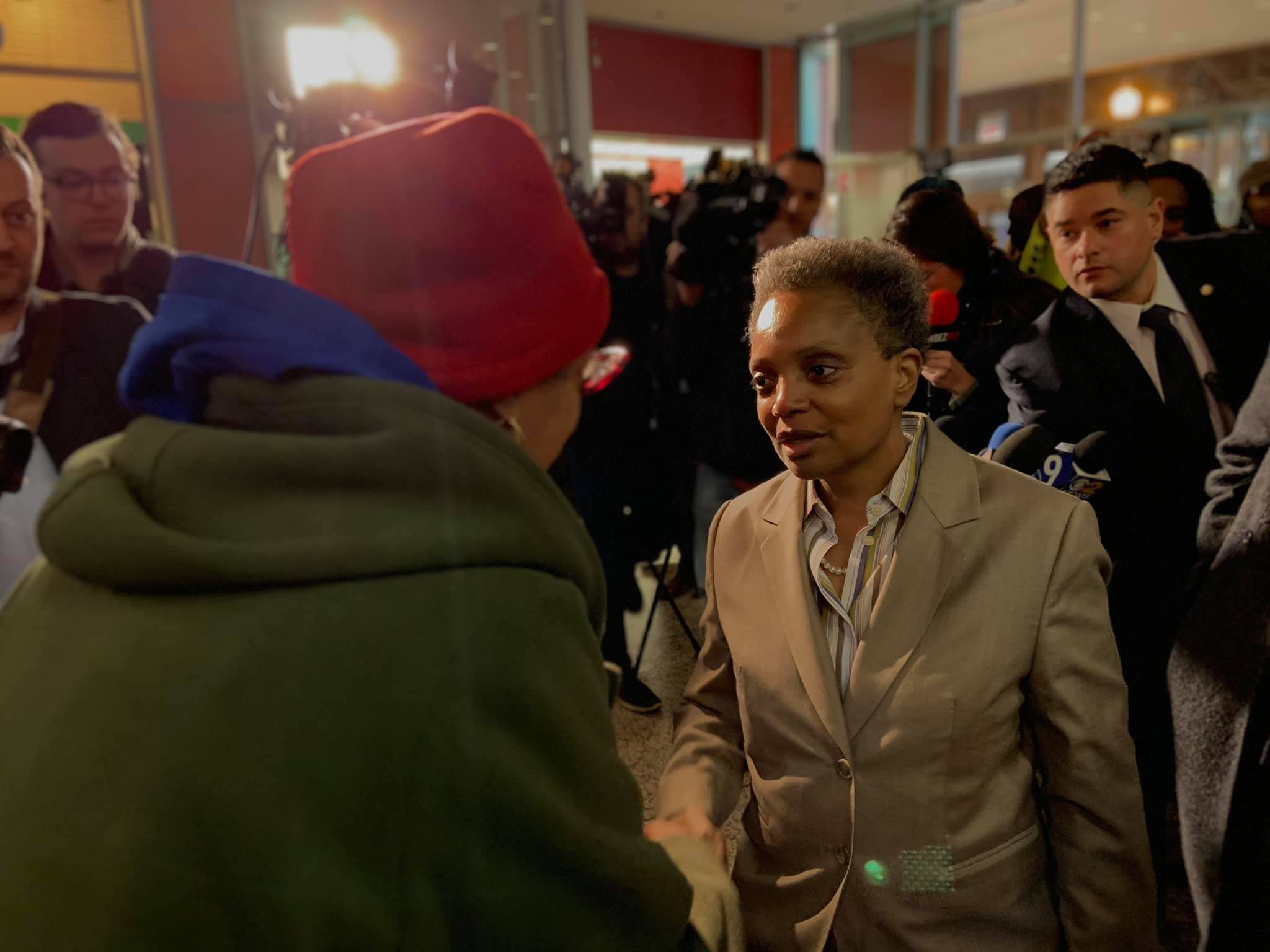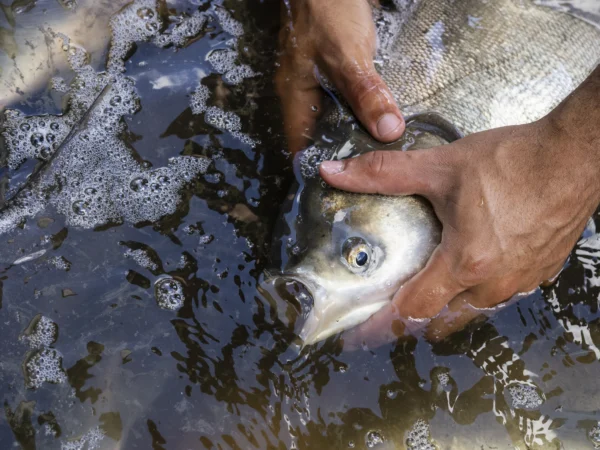
Since taking office in May 2019, Chicago Mayor Lori Lightfoot has emphasized that her environmental priorities are focused on the social justice issues of access to drinking water and clean air.
“The mayor is deeply committed to putting environmental justice at the forefront of her environmental agenda,” spokesperson Hali Levandoski told Great Lakes Now.
Lightfoot campaigned on an environmental justice platform during the 2019 election and in her first day in office ended water shutoffs for people who couldn’t afford to pay their water bill.
That was quickly followed by the city council’s approval of her water affordability plan to help restore service to people whose water had previously been shut off.
Lightfoot’s action on water rights drew attention from water rights activists.
Maude Barlow, board chair of the water rights advocacy group Food and Water Watch had praise for Lightfoot.

Prof. Rachel Havrelock
(Photo by Jenny Fontaine, University
of Illinois at Chicago)
“Mayor Lightfoot is standing by her promise, and that is incredibly important. Especially as there are so many demands right now on governments to deal with the many crises of COVID. She could easily have put it on the back burner,” Barlow told Great Lakes Now.
University of Illinois at Chicago professor Rachel Havrelock also commended Lightfoot, saying the new water shutoff policy is “solid” and a significant improvement over that of former Mayor Rahm Emanuel.
But Havrelock, who focuses on water policy at UIC, expressed concern that Lightfoot’s debt relief program that was supposed to be online on March 1 was only able to achieve a soft launch in April, just as the COVID-19 pandemic accelerated.
Overall, Lightfoot’s policy “still falls short from what’s necessary for a water policy in the Great Lakes region, especially during the pandemic,” Havrelock said.
New sustainability officer
Lightfoot’s next step was the launch of her Plan for a Cleaner Environment designed to “protect Chicagoans from environmental harm” in January this year.
The plan’s purpose is to “ensure that residents have clean air to breathe and safe water to drink no matter their race, economic status or zip code,” Lightfoot said on the plan’s release.
In June, Lightfoot selected Angela Tovar to be Chicago’s chief sustainability officer with responsibility to oversee the plan. The previous administration of Mayor Rahm Emanuel had eliminated a similar position in a budget-cutting move.
Lightfoot originally planned a more substantial sustainability initiative but was forced to scale back due to budget pressure.
Tovar comes to her position after ten years of advocating for environmental justice reforms in New York City and greater Chicago’s sprawling Cook County, which has over 5 million residents.
Tovar’s agenda will be “centered around racial and social justice,” Levandoski said, and that means making sure that communities that have historically borne the burdens of disinvestment and environmental neglect will be a priority. The backdrop to her work will be to consider the impact of climate change on those communities.
The mayor’s office did not make Tovar available for an interview, citing her short tenure on the job, but said an early priority will be to review zoning codes and regulations to look for policy gaps that can lead to improved air quality if closed.
A focus on air quality is personal for Tovar who has roots in Chicago’s industrialized Southeast Side, which has historically encountered multiple air quality threats from manufacturing plants and storage facilities.
Lightfoot’s commitment to environmental justice will soon be put to a test.
In June, the Illinois EPA approved a permit that will allow relocation of a scrap metal recycling operation from Chicago’s developing north side to the Southeast Side. The company, General Iron, has a history of environmental problems. The final decision on the relocation rests with the city of Chicago, according to the ILEPA.
Lightfoot and Tovar also inherit what the environmental plan referred to as Chicago’s “abysmal” recycling rates.
Chicago’s recycling rate is 8.8 percent, compared to a national average of 35 percent, and programs that date back to 2008 have not been able to improve the rate.
Lightfoot has promised a study to look at best practices for regions who perform at or near the national average for recycling.
Great Lakes Now asked key Chicago environmental groups to comment on Lightfoot’s campaign pledges and their expectations going forward for the chief sustainability position.
Chicago’s Environmental Law and Policy Center spokesperson Judith Nemes declined to comment, citing pending workload. The Natural Resources Defense Council, with close ties to the environmental concerns of the Southeast Side, did not respond to requests to comment.
Backseat for the Great Lakes?
It’s unclear if Lightfoot will follow in Daley and Emanuel’s footsteps when it comes to the Great Lakes.
Lightfoot’s January environmental plan calls for Chicago to be a regional leader “working with all levels of government to address invasive species, leading on stormwater and flooding issues, promoting green infrastructure, and more.”
Chicago’s previous two mayors, Richard M. Daley and Rahm Emanuel, were heavily involved in making sure the city was in a leadership role on Great Lakes issues.
Daley, who left office in 2011, along with Toronto Mayor David Miller, co-founded the Great Lakes St. Lawrence Cities Initiative in 2003, a coalition of U.S. and Canadian mayors who lobbied their respective federal governments on Great Lakes issues.
With Chicago, Toronto and other Great Lakes cities literally on the frontlines of water issues that had an impact on millions of people, Daley and Miller wanted to make sure that cities had “seats at the table” when Great Lakes issues were discussed in Washington and Ottawa.
As a member of Congress, Emanuel was instrumental in securing federal funding for the Great Lakes restoration program which was approved in 2009.
As mayor, Emanuel continued Daley’s Great Lakes work and leveraged his Washington connections hosting a drinking water summit of Great Lakes and federal leaders after the 2014 Toledo water crisis, when toxic algae caused the city to shut down its water system.
Lightfoot’s January environmental plan calls for Chicago to continue its membership in the Great Lakes St. Lawrence Cities Initiative.
But spokesperson Levandoski declined to comment when asked if Mayor Lightfoot would follow the lead of Daley and Emanuel on the Great Lakes.
Read more coverage of Chicago on Great Lakes Now:
After the Flood: How Chicago is coping with the effects of climate change
Lack of social distancing leads to closure of parks, trails in Chicago and elsewhere
Water for All: Milwaukee, Chicago lead in ensuring water during COVID-19 crisis
API key not valid. Please pass a valid API key.Featured image: Chicago Mayor Lori Lightfoot (Photo by @LightfootforChicago via facebook.com)




